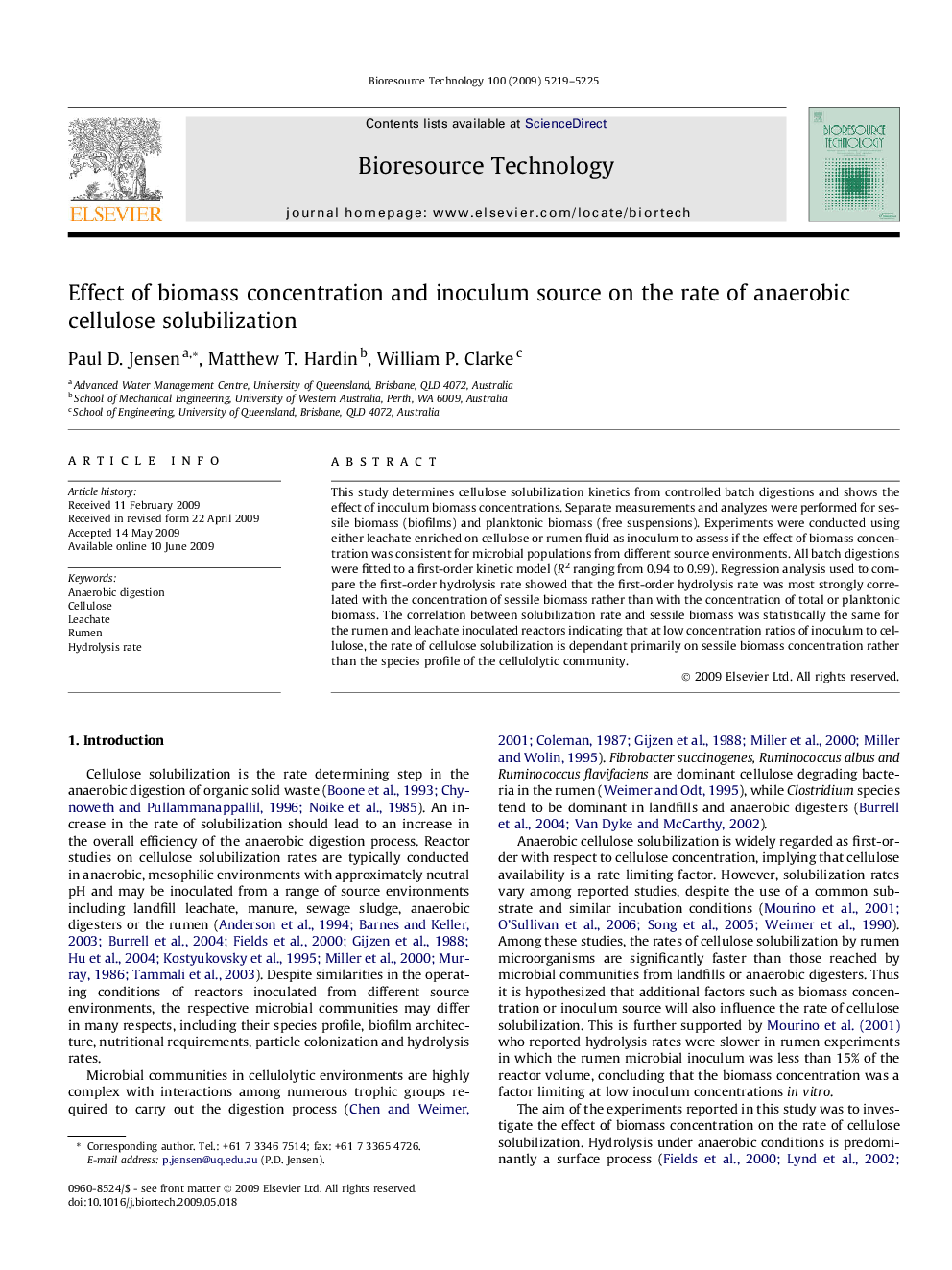| Article ID | Journal | Published Year | Pages | File Type |
|---|---|---|---|---|
| 684480 | Bioresource Technology | 2009 | 7 Pages |
This study determines cellulose solubilization kinetics from controlled batch digestions and shows the effect of inoculum biomass concentrations. Separate measurements and analyzes were performed for sessile biomass (biofilms) and planktonic biomass (free suspensions). Experiments were conducted using either leachate enriched on cellulose or rumen fluid as inoculum to assess if the effect of biomass concentration was consistent for microbial populations from different source environments. All batch digestions were fitted to a first-order kinetic model (R2 ranging from 0.94 to 0.99). Regression analysis used to compare the first-order hydrolysis rate showed that the first-order hydrolysis rate was most strongly correlated with the concentration of sessile biomass rather than with the concentration of total or planktonic biomass. The correlation between solubilization rate and sessile biomass was statistically the same for the rumen and leachate inoculated reactors indicating that at low concentration ratios of inoculum to cellulose, the rate of cellulose solubilization is dependant primarily on sessile biomass concentration rather than the species profile of the cellulolytic community.
